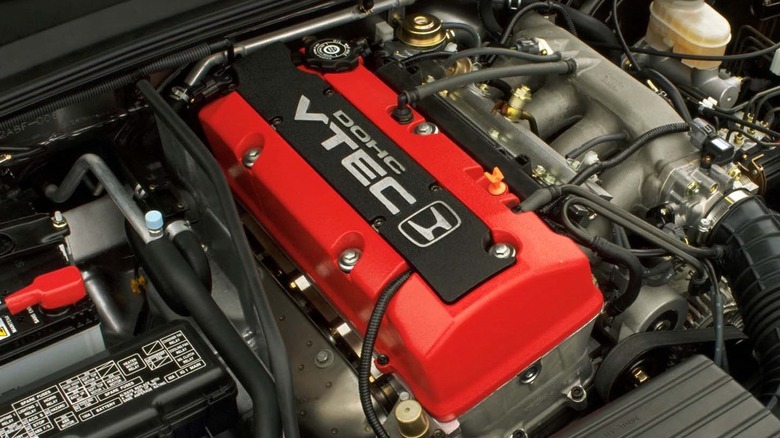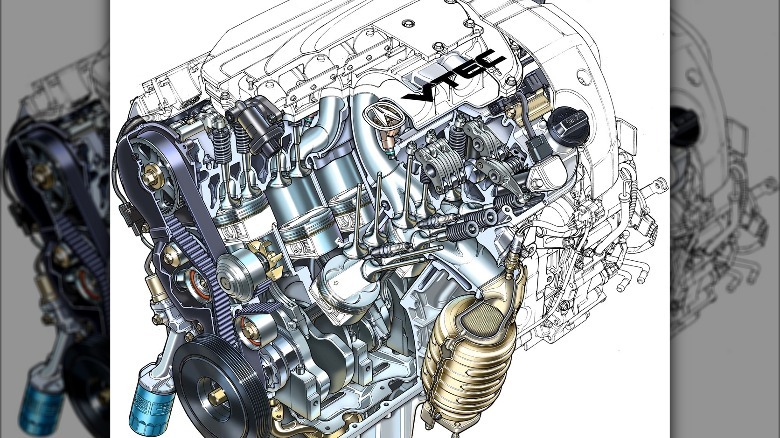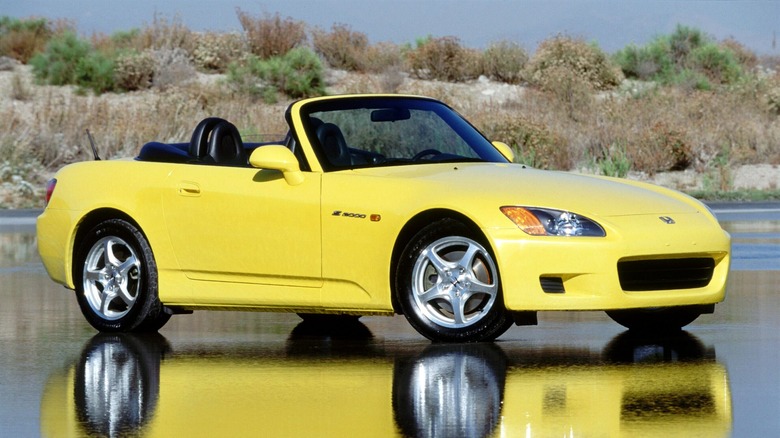Honda's VTEC System Explained (And What Makes It So Good)
Take a look at any modern Honda car and you will likely notice the word "VTEC" etched on it somewhere. You may have even heard of the meme "VTEC just kicked in." And although VTEC itself is associated with Honda's performance cars like the Civic Type-R or Honda S2000, it's not explicitly relegated to the fast end of Honda's lineup, as even Honda's crossovers and minivans utilize VTEC technology. So what is it, and why does it set Honda apart?
VTEC is an acronym that stands for Variable Valve Time and Electronic Lift Control. That mouthful means that cars with VETC can "extract maximum horsepower and torque from smaller displacement engines without using turbocharging," according to Honda. The first ever car to debut with a VTEC-equipped engine was the 1989 Honda Integra XSi overseas. Despite its relatively small 1.6-liter engine, the little Integra could pump out 160 horsepower.
A lot of power from a small engine
As for how it actually works, it's a marvel of automotive engineering. At the top of most modern car engines is the "head" that contains, in simple terms, all the valves, camshaft(s), and sparkplugs that make the engine function. VTEC works by using a set of three rocker arms on top of each cylinder resting on a camshaft that controls the valves. As Honda says, a low speeds, when the engine isn't revving very fast, a third of those rocker arms don't do anything, mainly because the engine isn't working very hard. When you kick it into high gear, that third rocker arm clocks in to work and is able to help the engine achieve more horsepower as the revs climb.
Honda attests that VTEC allows your average Honda to essentially take on the persona of two different cars. When your Civic is just cruising around, it's not particularly exciting, but gets the commute done. However when it hits a high enough RPM, VTEC works its magic and allows its tiny powerplant to output as much power as it can muster. Even the exhaust sound changes, according to Honda, as the fundamental nature of how the exhaust exits the engine (through the valves) has been altered.
The de facto standard for Honda
Nowadays, Hondas run with a modernized version of VTEC called "i-VTEC" that makes the process more computerized. In addition to squeezing every possible bit of power out of a tiny engine, VTEC can also be utilized to achieve better fuel economy. At low-RPMs, the engine isn't working very hard, therefore getting more MPGs.
Most automakers today have some sort of variable valve-timing systems and a catchy name for it. Honda was just one of the first brands to do it — and by far the most well-recognized. Given the fact that a Honda S2000 can somehow get 240 horsepower out of a 2-liter engine, means that its might be one of the best manufacturers to ever do it. You can find VTEC on a wide number of Hondas dating back to the late 1980s and early 1990s. Today, VTEC is present on just about every car Honda makes and has become a de facto standard feature on any engine bearing a Honda badge.



